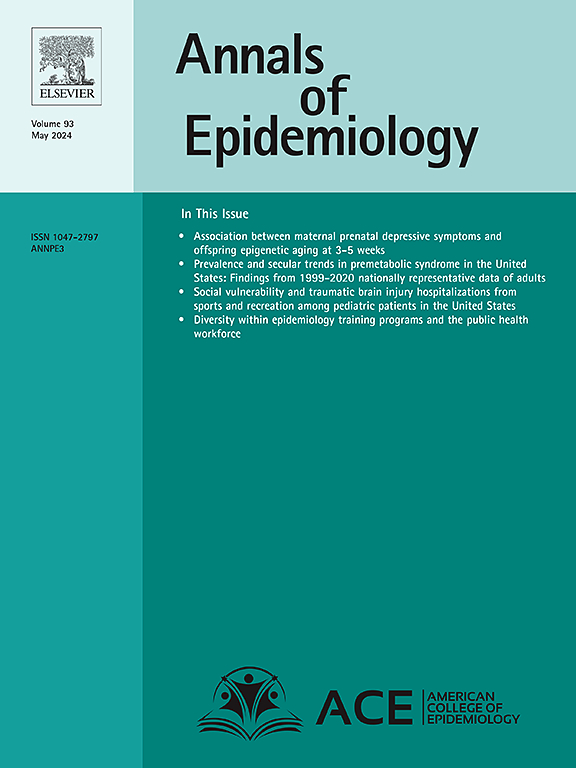高龄患者经导管主动脉瓣置入术后的临床结果:一项基于人群的回顾性队列研究
IF 3.3
3区 医学
Q1 PUBLIC, ENVIRONMENTAL & OCCUPATIONAL HEALTH
引用次数: 0
摘要
目的:比较因症状性重度主动脉瓣狭窄(AS)接受经导管主动脉瓣植入术(TAVI)或保守治疗的老年患者的总生存率、全因和心力衰竭特异性住院风险。方法:基于意大利伦巴第地区医疗保健利用数据库的人群回顾性队列研究。该队列包括2017年至2021年间因AS住院的所有90岁以上老人,他们在首次诊断或保守治疗后90天内接受了TAVI。通过Cox或Fine&Grey回归模型评估TAVI与临床结果之间的关系。采用高维倾向评分匹配来降低组间异质性。结果:总共有16,848名因AS住院的老年患者。其中320例患者接受了TAVI,其中193例与同样多的对照患者匹配。TAVI患者和对照组患者的2年生存率分别为76.0 %和37.7 %,相对危险度为0.24(95% % CI 0.15-0.37)。2年心力衰竭再住院的累计发生率分别为11.1 %和26.5% %,相对危险度为0.64(95 % CI 0.40-0.99)。结论:本研究进一步支持TAVI在90岁老人中的有效性,因为它显示出提高他们的生存率,降低他们再住院的风险,并可能提高他们的生活质量。本文章由计算机程序翻译,如有差异,请以英文原文为准。
Clinical outcomes after transcatheter aortic valve implantation in nonagenarian patients: A retrospective population-based cohort study
Purpose
To compare the overall survival and the risk of all-cause and heart failure-specific hospitalization in nonagenarian patients hospitalized for symptomatic severe aortic stenosis (AS) who underwent transcatheter aortic valve implantation (TAVI) or conservative treatment.
Methods
Population-based retrospective cohort study based on healthcare utilization databases of the Italian region of Lombardy. The cohort included all nonagenarians hospitalized for AS between 2017 and 2021, who underwent TAVI within 90 days from first diagnosis or conservative treatment. The association between TAVI and clinical outcomes was assessed through Cox or Fine&Grey regression models. High-dimensional propensity score matching was used to reduce the heterogeneity between groups.
Results
Overall, 16,848 nonagenarians hospitalized for AS were identified. Among these, 320 patients underwent TAVI, of which 193 were matched to as many control patients. The 2-year survival rates were 76.0 % and 37.7 %, respectively, in TAVI and control patients, corresponding to an HR of 0.24 (95 % CI 0.15–0.37). The 2-year cumulative incidence of rehospitalization for heart failure was 11.1 % and 26.5 %, respectively, corresponding to an HR of 0.64 (95 % CI 0.40–0.99).
Conclusions
This study further supports the usefulness of TAVI in nonagenarians, as it showed to improve their survival rate, reduce their risk of rehospitalization, and likely increase their quality of life.
求助全文
通过发布文献求助,成功后即可免费获取论文全文。
去求助
来源期刊

Annals of Epidemiology
医学-公共卫生、环境卫生与职业卫生
CiteScore
7.40
自引率
1.80%
发文量
207
审稿时长
59 days
期刊介绍:
The journal emphasizes the application of epidemiologic methods to issues that affect the distribution and determinants of human illness in diverse contexts. Its primary focus is on chronic and acute conditions of diverse etiologies and of major importance to clinical medicine, public health, and health care delivery.
 求助内容:
求助内容: 应助结果提醒方式:
应助结果提醒方式:


